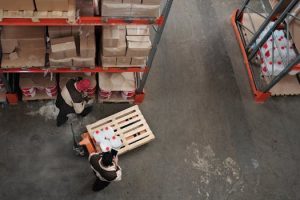The Circular Economy: Shopping with Reuse and Recycling in Mind
We are living in a time of unprecedented environmental challenges – from climate change to overflowing landfills – and it’s more important than ever to find sustainable solutions for our daily actions. One concept gaining traction in recent years is the Circular Economy, a model that promotes reducing waste and maximizing resources by using the principles of reuse and recycling in every aspect of our lives.
The Concept of the Circular Economy
The Circular Economy is a system that takes inspiration from nature, where resources are continuously reused and regenerated rather than discarded. In this closed-loop system, resources are kept in use for as long as possible, and at the end of their life, they are recovered and regenerated into new products. It aims to create a sustainable, circular flow of materials and resources, minimizing waste and environmental impact.
Shopping with Reuse in Mind
Bring Your Own Bag and Containers
One of the easiest ways to practice the principles of the Circular Economy while shopping is to bring your own bag and containers. Instead of using single-use plastic bags and containers, bring your own reusable bags and containers to the grocery store or farmers’ market. This reduces the need for new packaging and keeps existing containers in use for longer.
Choose Reusable Products
In today’s world, it’s easy to fall into the trap of convenience and opt for single-use products. However, these products often end up in the landfill after just one use. Instead, choose products that can be used multiple times, such as rechargeable batteries, cloth napkins, and refillable toiletry containers. By reducing the number of single-use items we consume, we are minimizing waste and promoting a circular system of resource use.
Shop Secondhand
Buying secondhand items is not only budget-friendly, but it also promotes the principles of the Circular Economy. By purchasing pre-loved items, you are extending the product’s lifespan and keeping it in use for longer, reducing the need for new resources. Whether it’s clothing, furniture, or household goods, shopping secondhand is a simple yet effective way to contribute to a circular economy.
Recycling Made Better
Know Your Local Recycling Rules
While recycling is an essential part of waste reduction, it’s essential to know your local recycling rules to ensure that you are properly disposing of your recyclables. Different materials may have specific guidelines, and not all items are recyclable in every area. Educate yourself about what can be recycled and how to do it properly to maximize the benefits of recycling.
Recycle Correctly
Properly recycling also means ensuring that the items being recycled are clean and sorted correctly. For example, food residue on a plastic container can contaminate an entire batch of recyclables, rendering them unrecyclable. Take the time to rinse and sort your recyclables to make the recycling process more effective and efficient.
Support Companies with Circular Strategies
As consumers, we have the power to support companies that prioritize circular strategies in their production and packaging processes. Look for products made from recycled or sustainable materials and support businesses that offer product take-back and recycling programs. By supporting these companies, we are sending a message that circular economy practices are important to us as consumers.
The Benefits of Shopping in a Circular Economy
Adopting circular economy practices while shopping has several benefits, not just for the environment but also for the economy and society as a whole. By reducing waste and extending the lifespan of resources, we are decreasing the need for new raw materials, reducing energy consumption, and minimizing the carbon footprint associated with production.
Furthermore, the circular economy promotes local economies and community involvement. By choosing secondhand or local products, we are supporting small businesses and keeping resources within the community. It also creates job opportunities in recycling and repairing industries, generating a more sustainable and inclusive economy.
Conclusion
The circular economy offers a holistic approach to sustainability, involving all aspects of our lives – including shopping. By incorporating the principles of reuse and recycling into our shopping habits, we can contribute to a more sustainable and circular system of resource use. Every small action counts, and together, we can create a better future for our planet.










